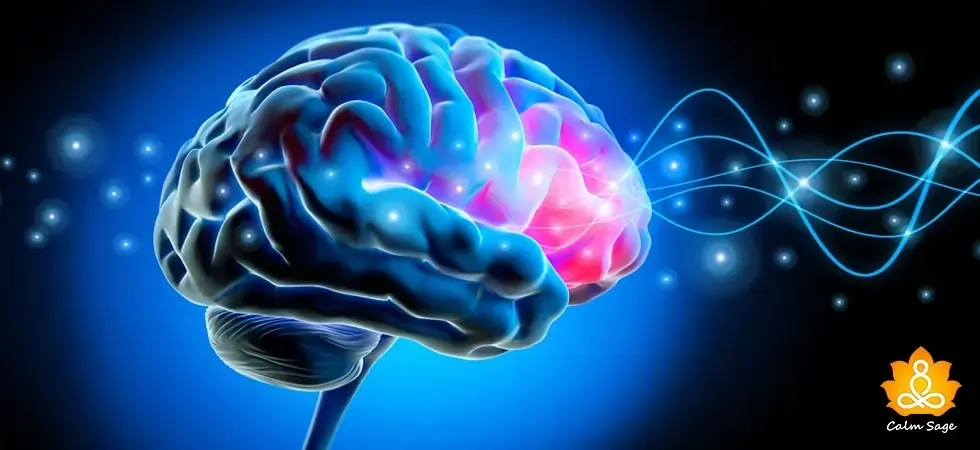Hysteria: Is Hysteria A Psychological Condition?

Hysteria can be defined as a feature of conditions that makes people experience physical symptoms having a psychological cause. Additionally, hysteria can also be used as slang to describe excessive behaviors or emotions in today’s world. In Victorian times, hysteria involved some signs such as nervousness, hallucinations, partial paralysis, and others.
Currently, these symptoms are highly associated with the presence of psychological disorders such as somatic disorders, dissociative disorders, and others. This blog covers everything you need to know about hysteria. So, let’s get started!
What is Hysteria?
Hysteria is a psychological disorder that makes people experience physical and mental health symptoms. This condition lacks evidence and more research related to the presence of physical symptoms. However, research shows that hysteria is a psychological condition affecting physical health.
The concept of hysteria was concluded by French Neurologist Jean-Martin Charcot in a study wherein he observed some patients lost sensations that were not biologically possible.
One of the common examples of hysteria can be seen in histrionic personality disorder which is also known as hysterical personality disorder featuring symptoms such as emotional outbursts, overreaction, attention-seeking behavior, sexual behavior, manipulative suicidal threats, and others.
History of Hysteria
In 1990 BCE, hysteria was referred to as a psychological disorder in females. This condition was first described as “spontaneous uterus movement” by Egyptians. Some people also referred to hysteria as a “wandering uterus.” After some years, a Greek physician Celsus suggested abstinence and virginity as a cure for hysteria.
Consecutively, hysteria comes from the Greek word Hysteria which means uterus. The prevalence of this condition only affected females till the 1600s when anatomist Thomas Willis suggested that hysteria does not develop in the uterus but it originates from the brain. This suggestion brought a lot of changes in Victorian times as there was a possibility of the development of hysteria in males as well.
In the second version of the Diagnostic and Statistical Manual of Mental Disorders (1968), hysteria was mentioned as “hysterical neurosis” which was later deleted in 1980.
| Currently, people who exhibit hysterical symptoms are commonly diagnosed with dissociative disorder, conversion disorder, and somatic symptom disorder. |
Hysteria brought a lot of changes in psychoanalysis. Austrian psychoanalyst Sigmund Freud studied hypnosis and hysteria with Charcot and later Freud’s work with Josef Breuer led to the origination of psychoanalytic therapy. The first case of psychoanalytic therapy was the case of Anna O (a young woman struggling with the symptoms of hysteria).
Anna concluded that talking about her problems in a safe field showed positive results in her treatment and this type of treatment must be called a “talking cure” which is commonly known as talk therapy in today’s world. Later, Sabina Spielrein was treated by Carl Jung for hysteria. Spielrein also became a psychoanalyst who took the psychoanalytic approach to Russia. Nazis murdered Sabina during World War II.
Symptoms of Hysteria
Below listed are some of the common signs and symptoms of hysteria:
- Blindness
- Hallucinations
- Increased suggestibility
- Emotional outbursts
- Histrionic behavior
- Loss of sensation
Other common symptoms associated with hysteria can be:
- Development of amnesia
- Development of partial or complete paralysis
- Development of epileptic-like seizures
- Feeling truancy or dreamy
- Increased pain sensations
- Passing out or fainting (syncope)
- Spasming or rigid muscles
Causes of Hysteria
While reading history, you must have concluded that there are various theories related to hysteria. Prior, hysteria was focused on the uterus, and later it was associated with somatic disorders and dissociative disorders (psychological disorders). According to the research, below listed are some of the common causes of hysteria:
- Trauma: Emotional, sexual, or physical abuse, natural disasters, and military experiences
- Abuse: Childhood abuse, parental neglect, body-related issues
- Social contagion: Causes signs related to hysteria to spread among a community
Diagnosis and Treatment of Hysteria
Hysteria is an outdated term used for cluster signs and symptoms of several psychological disorders, such as dissociative disorder, somatic symptoms disorder, and others. If you think you or your loved one might be struggling with hysterical symptoms, know that it can be a presence of psychological disorders.
Therefore, connecting with an experienced and certified mental health professional will help you seek the right diagnosis and treatment for the same. To connect with an experienced and certified mental health professional through online platforms, click below:

Great for CBT Based therapists
-
$40/week, billed every 4 weeks
-
Therapy via messaging, phone, or live video chat
-
Specialization for CBT based Therapy
20% off your first month

Best for Treatment Plants
-
$60 to $90/week, billed every 4 weeks
-
Therapy via messaging, phone, or live video chat
-
Flexible cancellation at any time
$100 off your first month with code SPACE
Hysterical symptoms require a deep assessment and evaluation of symptoms, during the diagnostic process; you can expect the diagnosis of below listed psychological disorders:
Dissociative Disorders
Dissociative disorders usually impact consciousness such as memory and identity formation. Dissociative disorders like dissociative amnesia, dissociative fugue, and dissociative identity disorder are likely to develop while experiencing hysterical symptoms. To learn more about these disorders, click below:
Somatic Symptom Disorder
Somatic symptom disorders result in physical symptoms such as pain, weakness, shortness of breath, and significant stress. one of the most important features of somatic symptom disorder is that people aren’t actually ill, they don’t fake illness either, however, their brain makes them believe that they are ill. Below listed disorders are listed under somatic symptom disorder:
- Conversion disorder
- Factitious disorder
- Illness anxiety disorder
Coming forth to the treatment process of hysteria, after getting the right diagnosis, an individual is likely to receive treatment for symptoms associated with psychological disorders.
For example, if the symptoms are more inclined to somatic symptom disorder, the client is more likely to receive therapy required for that particular disorder. Below listed are the common therapy options prescribed for dissociative and somatic disorders:
- Cognitive behavioral therapy (CBT): CBT helps in replacing negative thoughts and behaviors with positive ones. Principles of CBT also teach various healthy coping strategies which help individuals recover effectively.
- Dialectical behavioral therapy (DBT): DBT is a form of CBT wherein individuals learn how to manage their emotions and behaviors. Additionally, it also brings positive changes with the help of CBT principles.
- Eye movement desensitization and reprocessing (EMDR): EMDR is a type of psychotherapy that helps people recover from traumatic experiences and memories. It helps remove traumatic memories stuck in the brain.
- Mindfulness-based therapy: Mindfulness-based therapy is a modified CBT wherein mindfulness is incorporated which enhances self-awareness with the help of breathing and meditation practices.
In some severe cases, a psychotherapist might also prescribe some medications to treat specific symptoms such as amnesia, hallucinations, and others. Commonly prescribed medications include:
- St. John’s Wort
- Amitriptyline
- Selective serotonin reuptake inhibitors (SSRIs)
I hope this blog helps you understand everything you want to learn about hysteria. For more such content, connect with us through all social media platforms.
Thanks for reading!




















